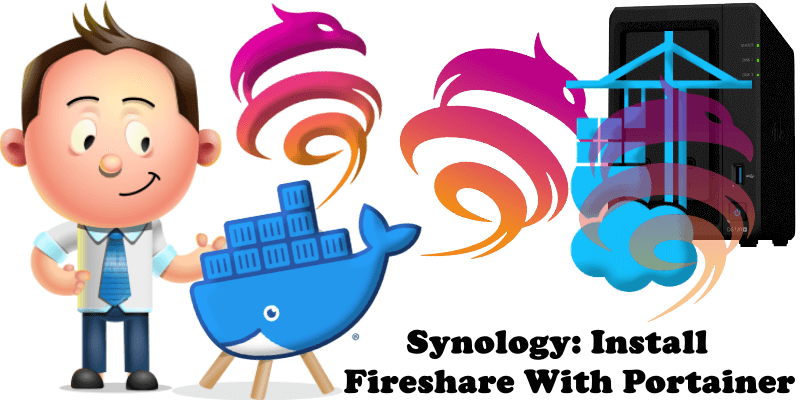
My previous guide for Fireshare involved the use of Task Scheduler. Today I’m offering a recommended and excellent alternative for installing the latest Fireshare version via Portainer. With Fireshare you can easily share your game clips, videos, or other media via unique links. The goal of Fireshare is to provide a very simple and easy way for you to share any videos you have through a unique link. All you have to do is put your videos in a folder and Fireshare will take care of the rest. In this step by step guide I will show you how to install Fireshare on your Synology NAS using Docker & Portainer.
This guide works perfectly with the latest Fireshare v1.3.2 release.
STEP 1
Please Support My work by Making a Donation.
STEP 2
Install Portainer using my step by step guide. If you already have Portainer installed on your Synology NAS, skip this STEP. Attention: Make sure you have installed the latest Portainer version.
STEP 3
Make sure you have a synology.me Wildcard Certificate. Follow my guide to get a Wildcard Certificate. If you already have a synology.me Wildcard certificate, skip this STEP.
STEP 4
Go to Control Panel / Login Portal / Advanced Tab / click Reverse Proxy. Follow the instructions in the image below.

STEP 5
Now click the “Create” button. Follow the instructions in the image below.
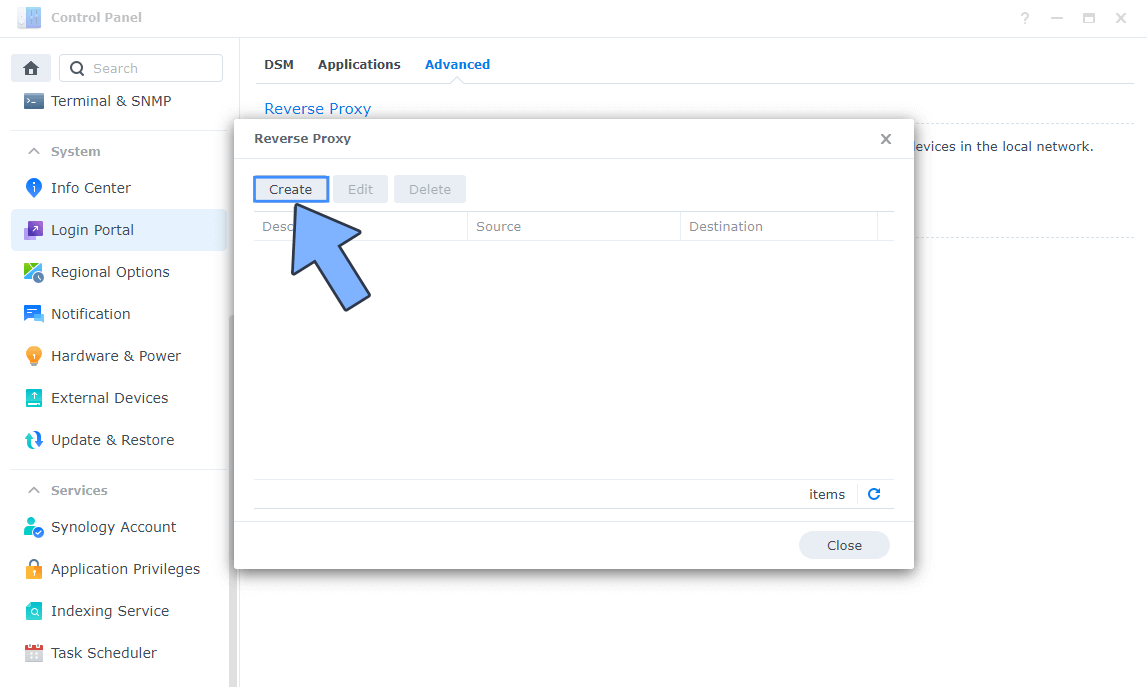
STEP 6
After you click the Create button, the window below will open. Follow the instructions in the image below.
On the General area, set the Reverse Proxy Name description: type in Fireshare. After that, add the following instructions:
Source:
Protocol: HTTPS
Hostname: fireshare.yourname.synology.me
Port: 443
Check Enable HSTS
Destination:
Protocol: HTTP
Hostname: localhost
Port: 5738
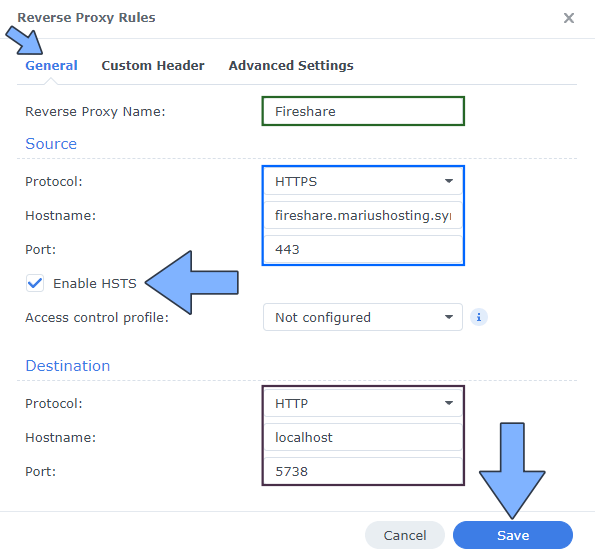
STEP 7
On the Reverse Proxy Rules click the Custom Header tab. Click Create and then, from the drop-down menu, click WebSocket. After you click on WebSocket, two Header Names and two Values will be automatically added. Click Save. Follow the instructions in the image below.

STEP 8
Go to Control Panel / Network / Connectivity / Check Enable HTTP/2 then click Apply. Follow the instructions in the image below.
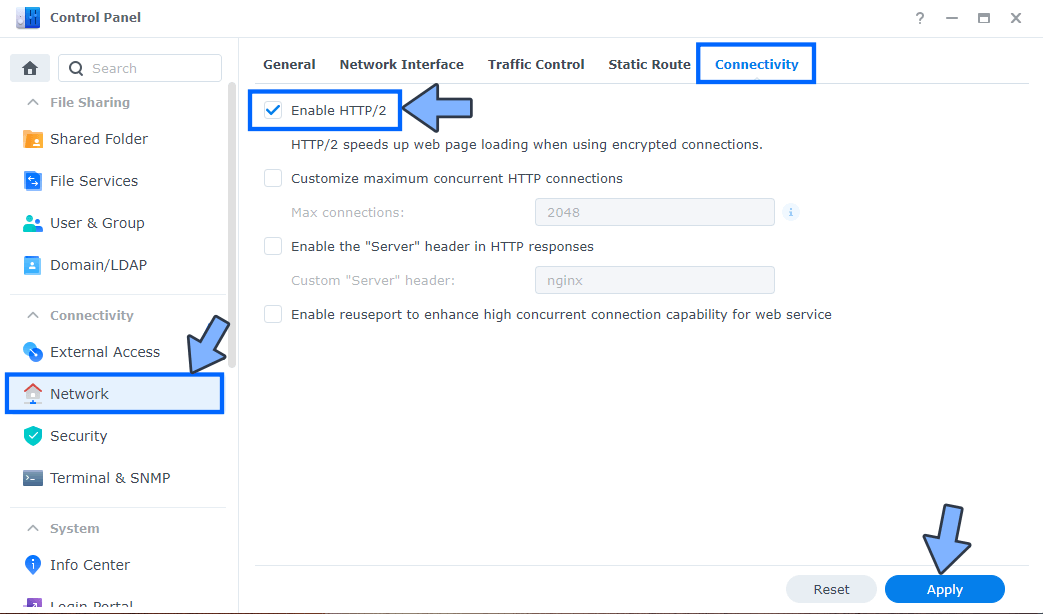
STEP 9
Go to Control Panel / Security / Advanced tab/ Check Enable HTTP Compression then click Apply. Follow the instructions in the image below.
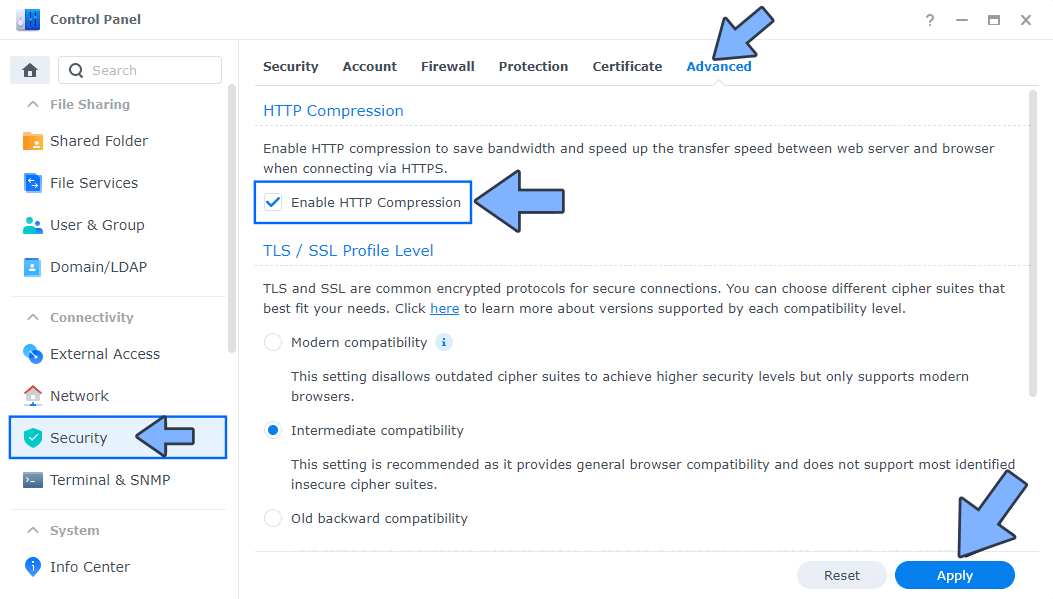
STEP 10
Go to File Station and open the docker folder. Inside the docker folder, create one new folders and name it fireshare. Follow the instructions in the image below.
Note: Be careful to enter only lowercase, not uppercase letters.
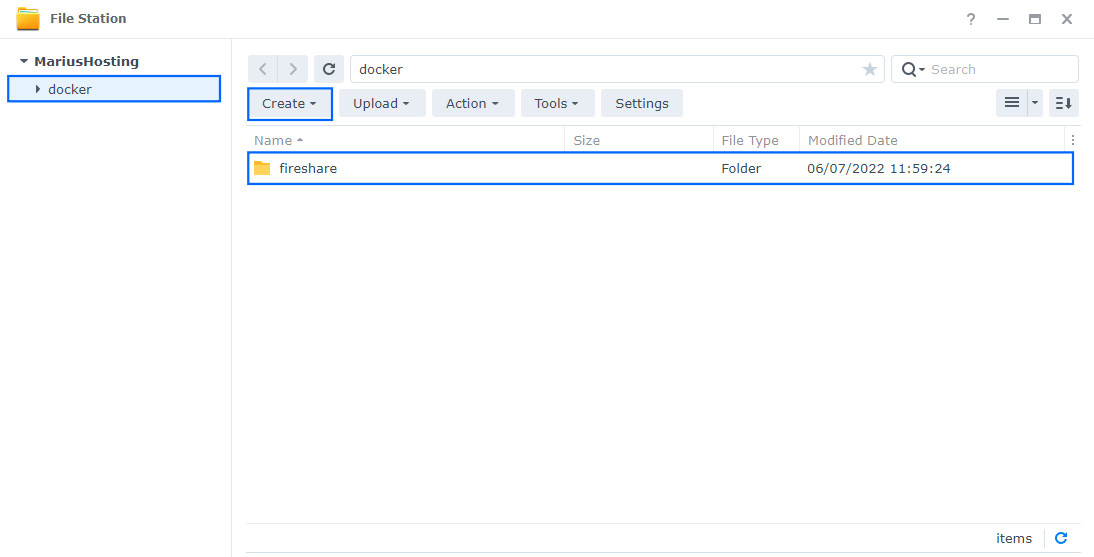
STEP 11
Now create two new folders inside the fireshare folder that you created at STEP 10 and name them processing and video. Follow the instructions in the image below.
Note: Be careful to enter only lowercase, not uppercase letters.

STEP 12
Populate the video folder that you have previously created at STEP 11 with your own videos.
STEP 13
Log into Portainer using your username and password. On the left sidebar in Portainer, click on Home then Live connect. Follow the instructions in the image below.

On the left sidebar in Portainer, click on Stacks then + Add stack. Follow the instructions in the image below.

STEP 14
In the Name field type in fireshare. Follow the instructions in the image below.
services:
fireshare:
container_name: Fireshare
image: shaneisrael/fireshare
mem_limit: 8g
cpu_shares: 768
security_opt:
- no-new-privileges:true
restart: on-failure:5
ports:
- 5738:80
volumes:
- /volume1/docker/fireshare:/data:rw
- /volume1/docker/fireshare/processing:/processed:rw
- /volume1/docker/fireshare/video:/videos:rw
environment:
ADMIN_PASSWORD: mariushosting
TZ: Europe/Bucharest
PUID: 1026
PGID: 100
Note: Before you paste the code above in the Web editor area below, change the value for ADMIN_PASSWORD. Type in your own password. mariushosting is an example for a password.
Note: Before you paste the code above in the Web editor area below, change the value for TZ. (Select your current Time Zone from this list.)
Note: Before you paste the code above in the Web editor area below, change the value numbers for PUID and PGID with your own values. (Follow my step by step guide on how to do this.)
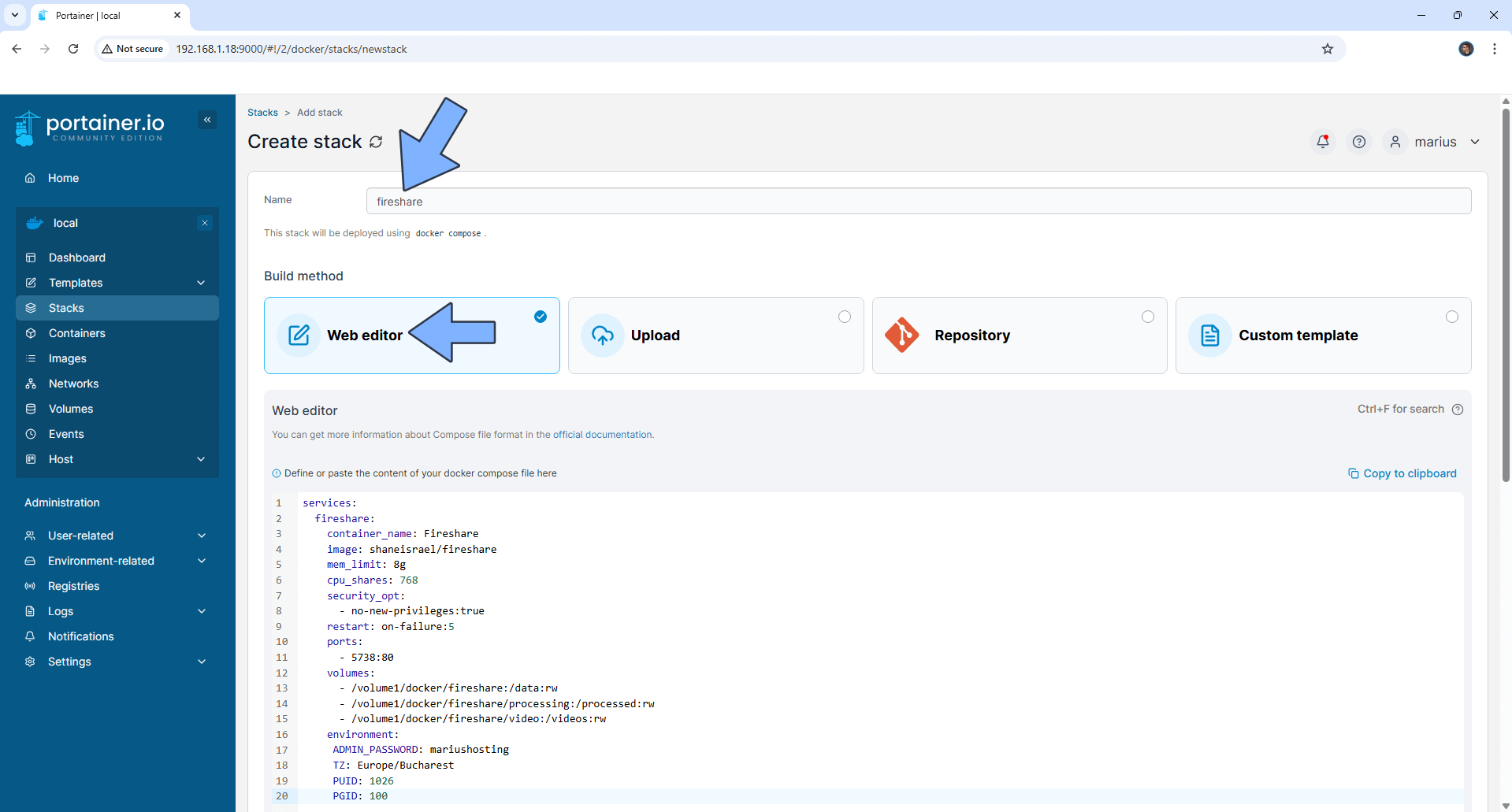
STEP 15
Scroll down on the page until you see a button named Deploy the stack. Click on it. Follow the instructions in the image below. The installation process can take up to a few minutes. It will depend on your Internet speed connection.
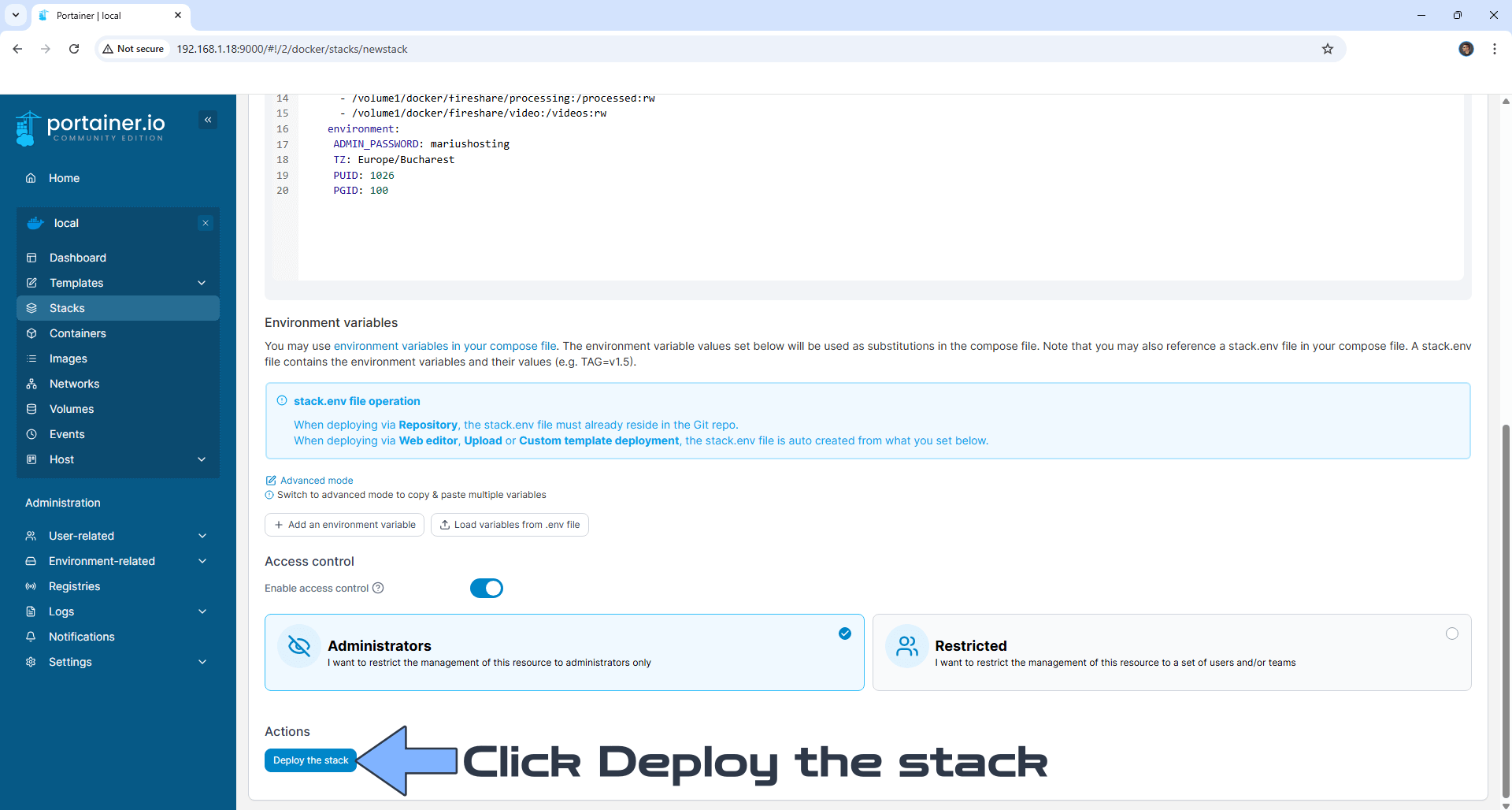
STEP 16
If everything goes right, you will see the following message at the top right of your screen: “Success Stack successfully deployed“.

STEP 17
🟢Please Support My work by Making a Donation. Almost 99,9% of the people that install something using my guides forget to support my work, or just ignore STEP 1. I’ve been very honest about this aspect of my work since the beginning: I don’t run any ADS, I don’t require subscriptions, paid or otherwise, I don’t collect IPs, emails, and I don’t have any referral links from Amazon or other merchants. I also don’t have any POP-UPs or COOKIES. I have repeatedly been told over the years how much I have contributed to the community. It’s something I love doing and have been honest about my passion since the beginning. But I also Need The Community to Support me Back to be able to continue doing this work.
STEP 18
Now open your browser and type in your HTTPS/SSL certificate like this https://fireshare.yourname.synology.me In my case it’s https://fireshare.mariushosting.synology.me Click Login at the bottom left of the page. Follow the instructions in the image below.
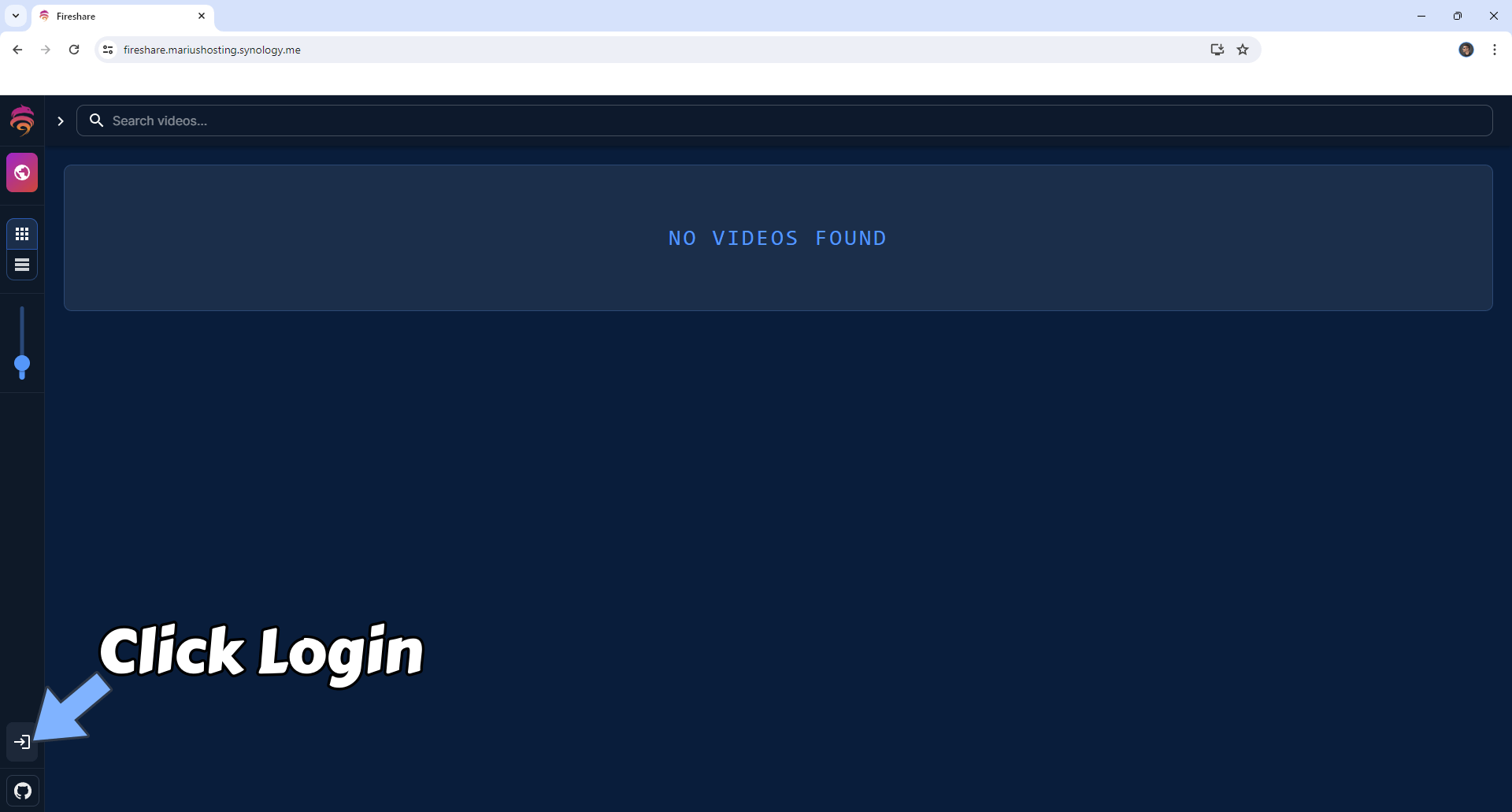
STEP 19
After you click Login at STEP 18, you will be asked to add your Username and Password. The default username is admin and the password is your own password you have previously chosen at STEP 14. Click Sign in. Follow the instructions in the image below.
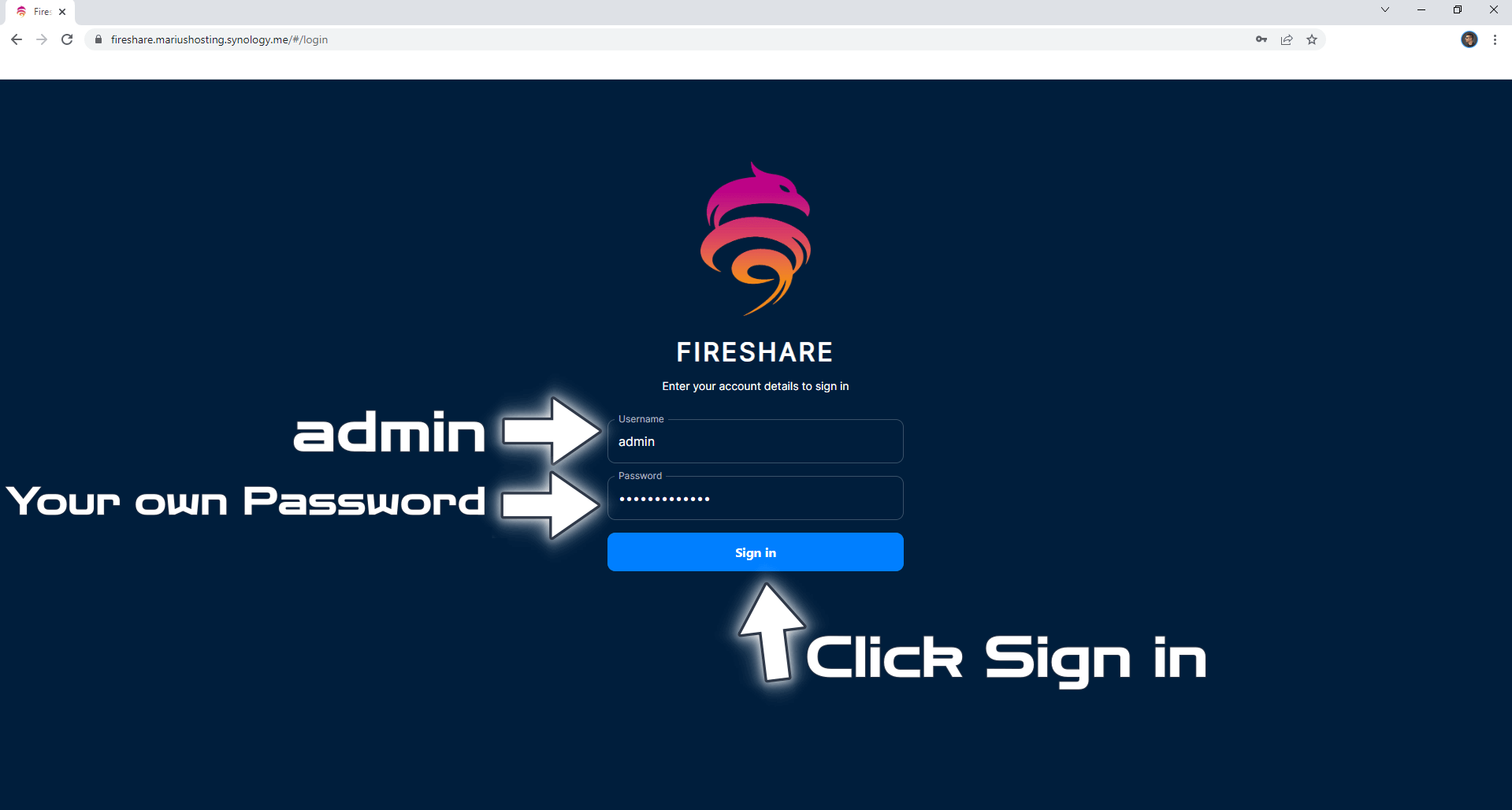
STEP 20
Click Scan Library. Wait some minutes. Your video library will be scanned. Follow the instructions in the image below.
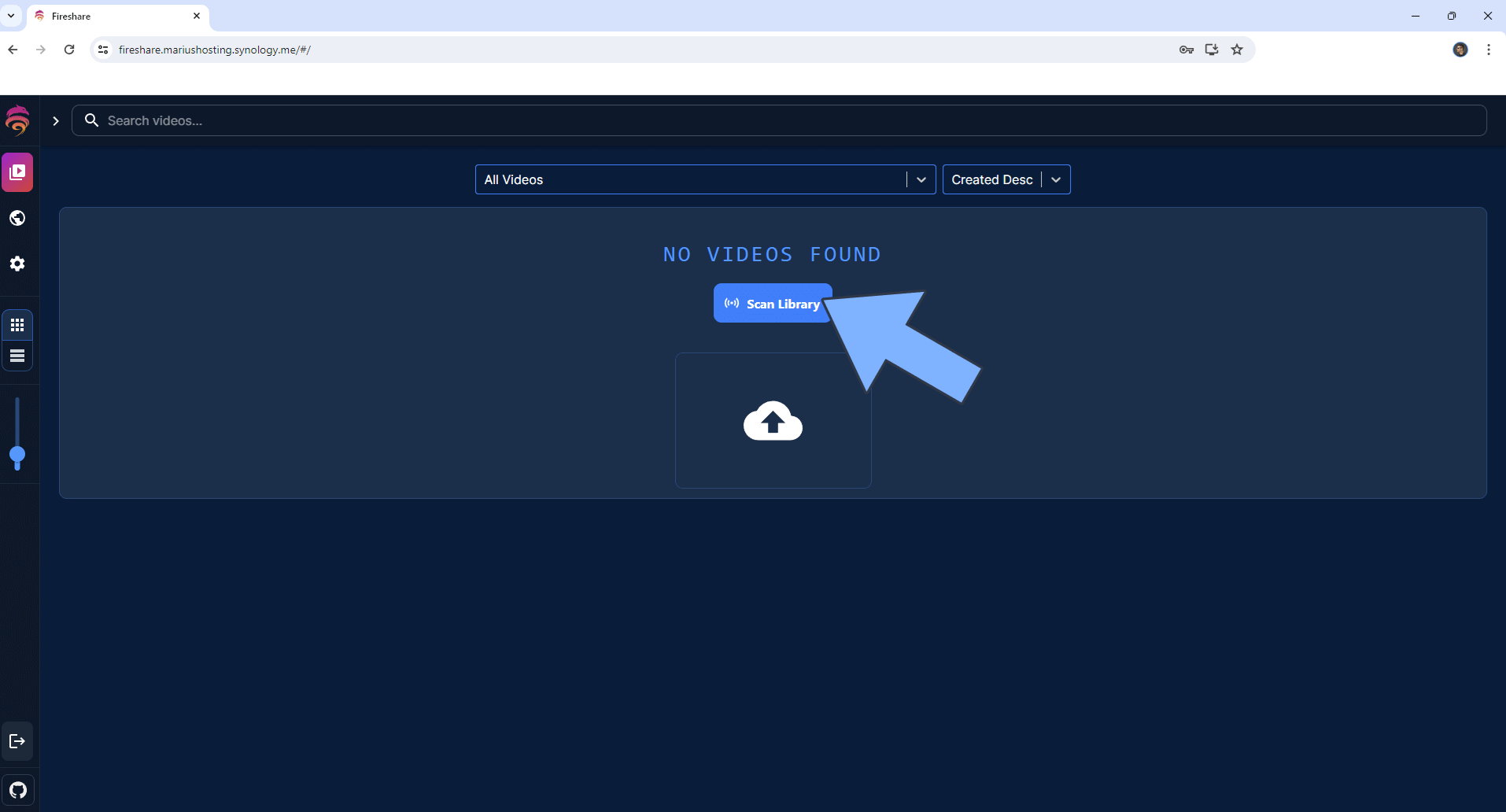
STEP 21
Refresh the page after a couple of minutes to see your videos listed. You can also upload videos from your own computer. Follow the instructions in the image below.
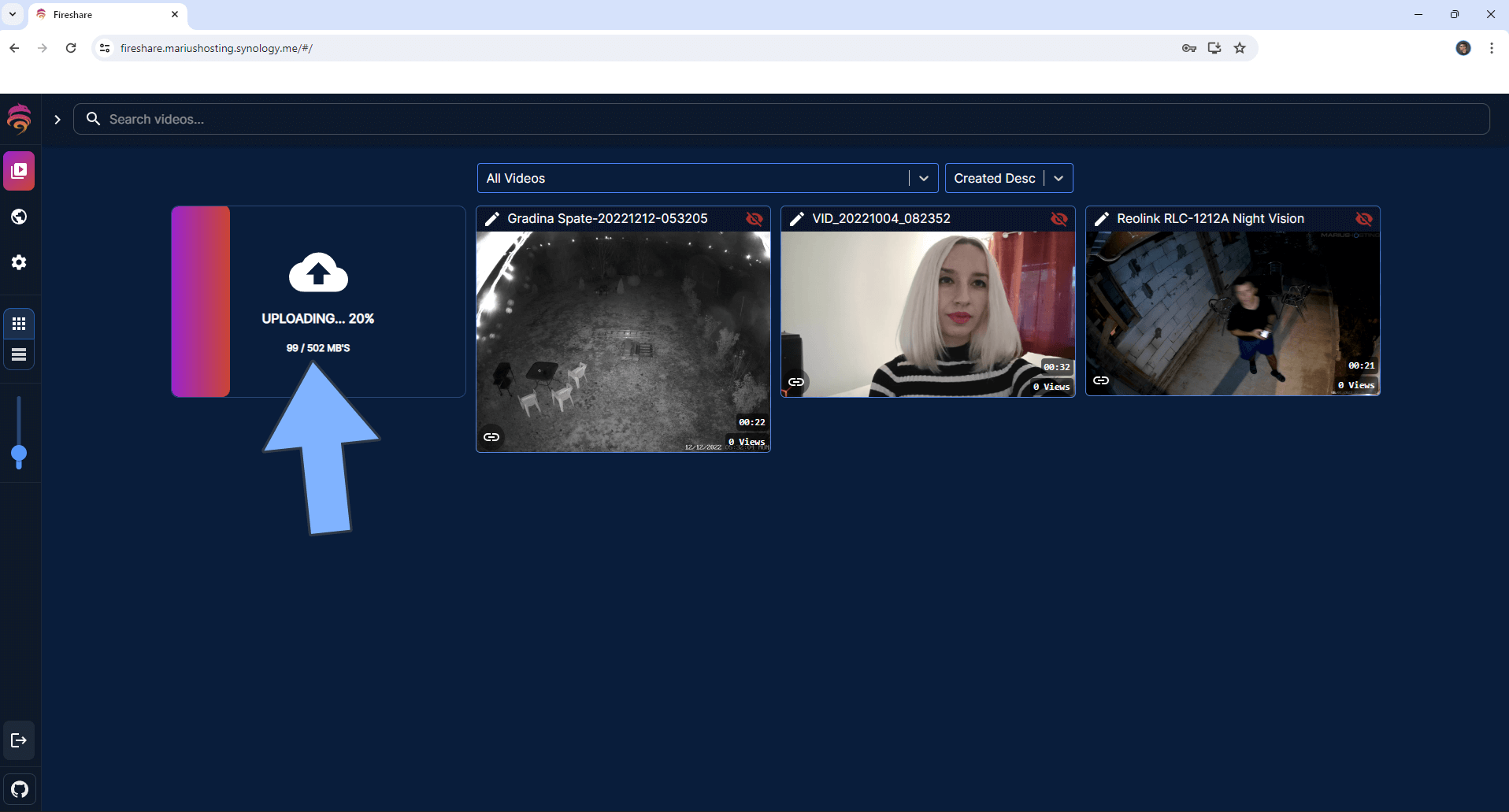
STEP 22
Click the share link present in your videos after you click to view it. Follow the instructions in the image below.
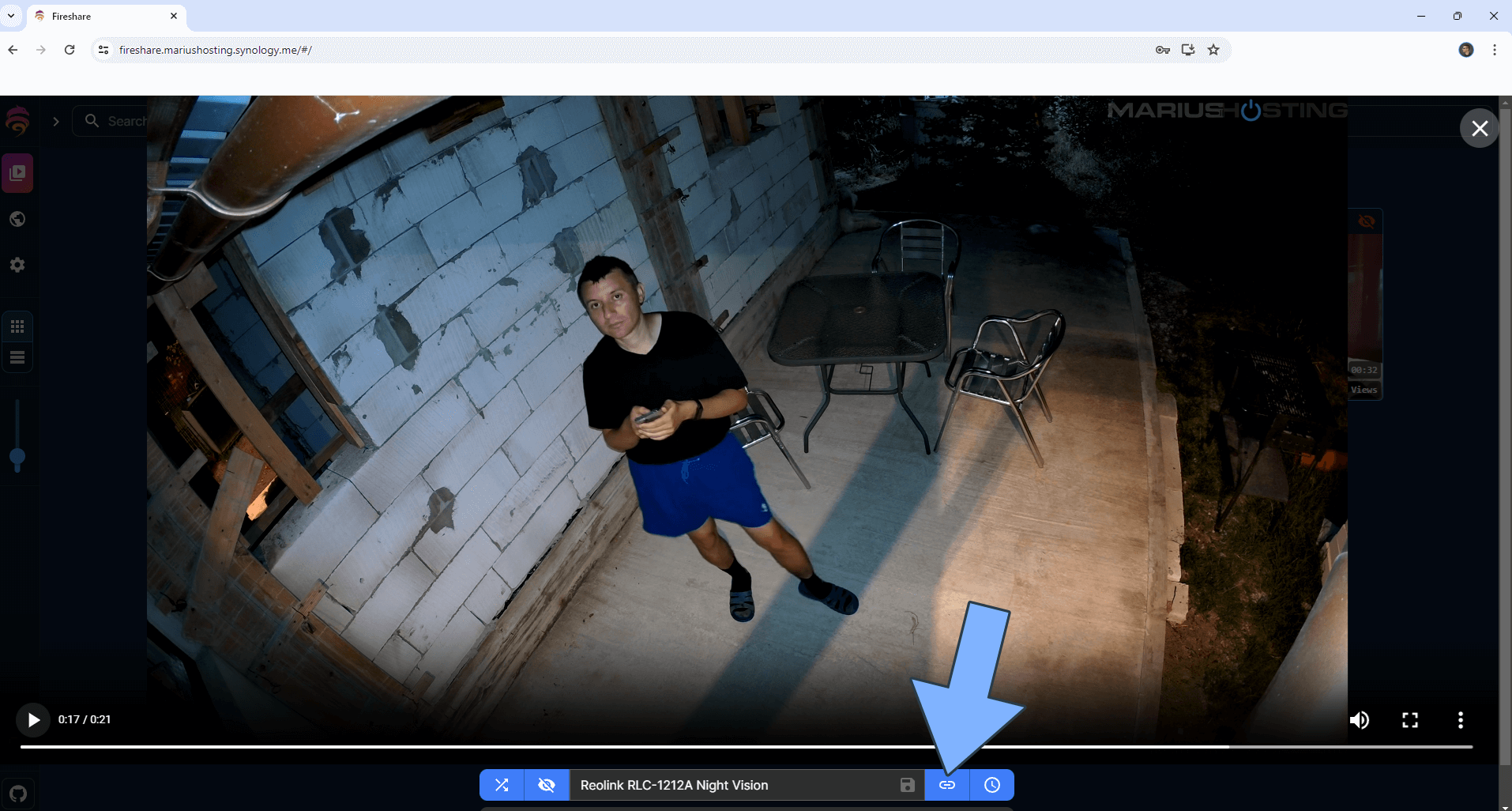
STEP 23
Paste the link you have previously copied at STEP 22 in a new browser window. Follow the instructions in the image below.
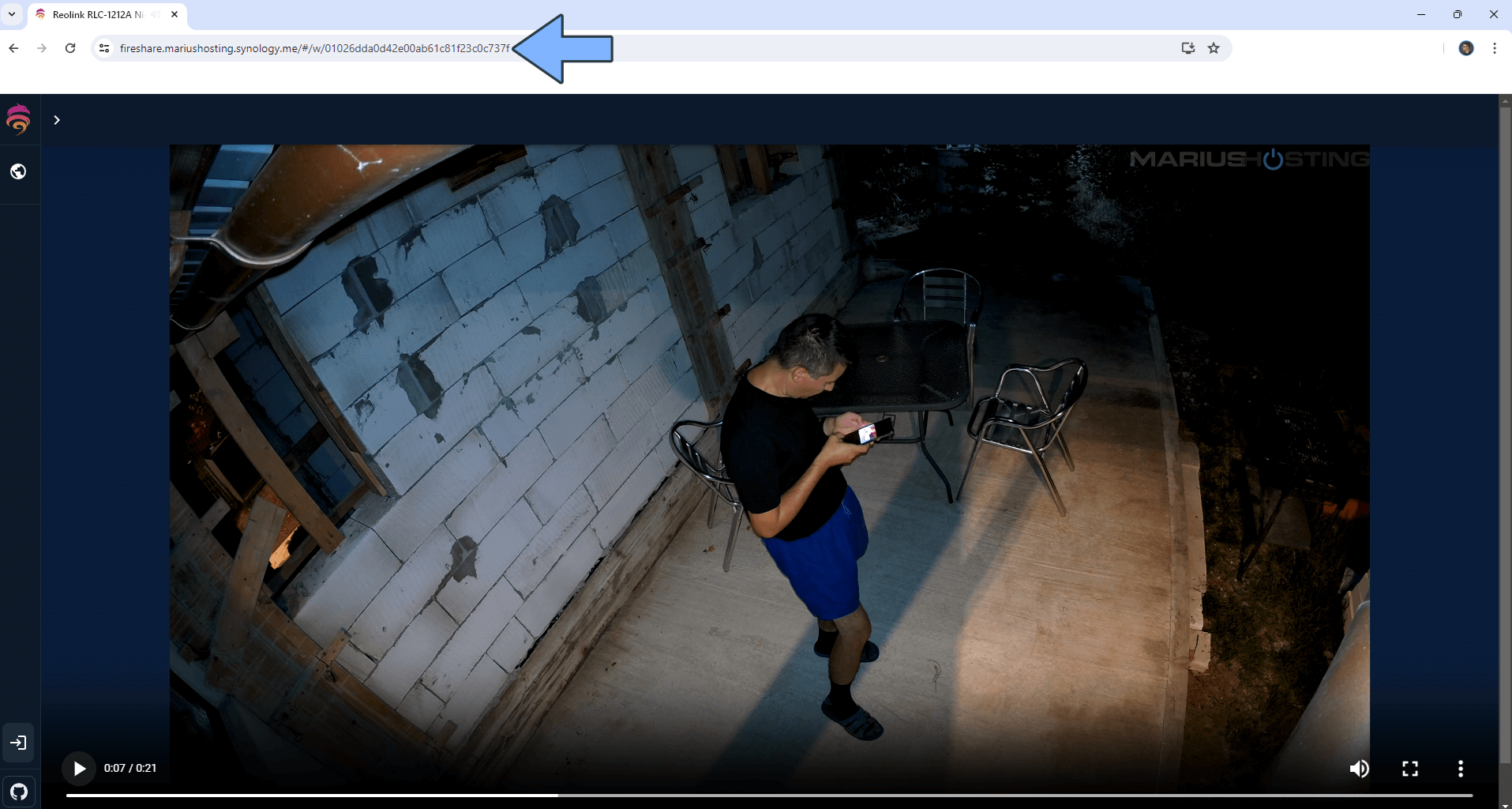
Enjoy Fireshare!
If you encounter issues by using this container, make sure to check out the Common Docker issues article.
Note: Can I run Docker on my Synology NAS? See the supported models.
Note: How to Back Up Docker Containers on your Synology NAS.
Note: Find out how to update the Fireshare Share container with the latest image.
Note: How to Free Disk Space on Your NAS if You Run Docker.
Note: How to Schedule Start & Stop For Docker Containers.
Note: How to Activate Email Notifications.
Note: How to Add Access Control Profile on Your NAS.
Note: How to Change Docker Containers Restart Policy.
Note: How to Use Docker Containers With VPN.
Note: Convert Docker Run Into Docker Compose.
Note: How to Clean Docker.
Note: How to Clean Docker Automatically.
Note: Best Practices When Using Docker and DDNS.
Note: Some Docker Containers Need WebSocket.
Note: Find out the Best NAS Models For Docker.
Note: Activate Gmail SMTP For Docker Containers.
This post was updated on Friday / December 5th, 2025 at 7:24 PM
